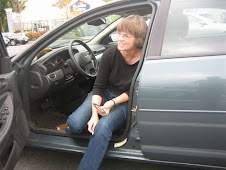Full disclosure: Isabel Allende is one of my favorite authors -- although I had only read Aphrodite and My Invented Country before venturing into her story of a “picara” named Eva Luna. Eva, like the boy in The Painted Bird, loses her parents when very young and her adventures arise in a mysterious world where she is either passed along to new households full of odd, sometimes threatening, but more often colorful people, or runs away to new predicaments..
Because she starts her journey so young and before she could attend school, her understanding of what happens to her is influenced by folklore, myths and dreams. This element of a picaresque story merges naturally with Allende’s style of magical realism – the amalgamation of supernatural elements and realistic themes – a style also employed by other South American authors.This style uses images that are highly visible and uniquely absurd, but not frightening: a house full of coffins; the lady of the house wig resembling a dying fox; the religious processions carry statues to end both droughts and deluges. Magical realism softens the physical flaws and psychological scars of the story’s characters who might have been more grotesque and less human in other roguish adventures: Raid’s hair lip; Rolfe’s child abuse; Melesio’s transsexuality.
Allende writes a timeless, placeless story. The landscape has both Andes-like mountains and Venezuelan petroleum. It’s political turmoil could take place in any South or Central American country. Because so much of the action takes place in remote areas, where the populations remain primitive and unaware of current events, it could have occurred anytime; it is anchored only in references to rocket launches and Fidel Castro.
Eva’s placement as a servant is not necessarily exploitative and is not depicted as something in itself as unnatural. Although she does not have the equivalent of a Sancho Panza accompanying her through her escapades, she has guiding adults like her abula Elivira, the Yugoslavian artist, and La Senora who contribute to her education in language, culture and womanhood. Her encounters with men, even when they could be threatening, are tempered with insights.
Eva’s quest is to become a writer, like Isabel’s, and towards the end of the book, Eva is writing the story just recounted. Isabel speaks through Eva at this point with her theories of storytelling and the absence of strict chronology. Isabel also speaks through Eva in her recollection of preparing food to enhance romance and her reverence of familial eccentricities.
Allende’s life lends itself readily to this genre.
Tuesday, February 9, 2010
Subscribe to:
Post Comments (Atom)



No comments:
Post a Comment